Trivia Browser

▲
1
▼
 Sometime in 1987-88, Sega and the Japanese magazine "Beep!" held a "Story Recruitment Campaign" to let readers submit ideas to be considered for Phantasy Star II. This contest was held both to set a base for the start of development and to market the game to a wider audience on the name value of Phantasy Star, with the game being heavily advertised in Beep! thereafter. Despite the contest's name, Sega accepted any idea and gave out awards for scenario writing, illustrations, and game mechanics. Out of over 2000 entries, 29 were selected as winners and awarded with individually numbered "Associate Planner" certificates. They were also offered to meet with the game's developers for a planning meeting on March 20, 1988 at Sega's headquarters in Otorii, Tokyo, among other prizes. The events of the planning meeting and the top 7 winners were published in the June 1988 issue of Beep!, including a picture of the full roundtable. Producer/programmer Yuji Naka and artist Rieko Kodama were two of the developers in attendance.
Sometime in 1987-88, Sega and the Japanese magazine "Beep!" held a "Story Recruitment Campaign" to let readers submit ideas to be considered for Phantasy Star II. This contest was held both to set a base for the start of development and to market the game to a wider audience on the name value of Phantasy Star, with the game being heavily advertised in Beep! thereafter. Despite the contest's name, Sega accepted any idea and gave out awards for scenario writing, illustrations, and game mechanics. Out of over 2000 entries, 29 were selected as winners and awarded with individually numbered "Associate Planner" certificates. They were also offered to meet with the game's developers for a planning meeting on March 20, 1988 at Sega's headquarters in Otorii, Tokyo, among other prizes. The events of the planning meeting and the top 7 winners were published in the June 1988 issue of Beep!, including a picture of the full roundtable. Producer/programmer Yuji Naka and artist Rieko Kodama were two of the developers in attendance.Associate Planner No. 001, the Grand Prize winner, was Fumiko Sato. Of the 29 winners, three of them are known to have gone on to work in the video game industry and returned for work at Sega:
• No. 004 was 17-year old Masahiro Sakurai, who won the "Game System Award". Sakurai often recalled the contest without mentioning the game by name, claiming he came up with "something like the action-focused Active Time Battle system seen in JRPGs" before it existed. It's believed that this meeting was what prompted Sakurai to drop out of vocational school to pursue a full-time career in game design, using the award to advance his professional image until he was hired by HAL Laboratory after graduating high school in 1989. Sakurai became known for his work with them and Nintendo, creating the Kirby and Super Smash Bros. series.
• No. 005 was Yukinobu Arikawa, who won the "Game System Special Award" for his entry titled "Those who inherit the legend". While it's not known if he attended the planning meeting, Arikawa would join Sega's AM2 team in 1990 and is still employed at Sega as of 2022. He became known for the comedic touches he adds to the games he works on, having worked as a game designer, writer, localizer and texture artist on different games in the Yakuza: Like a Dragon, Super Monkey Ball, Virtua Fighter, and Daytona USA series.
• No. 011 was middle schooler Keisuke Ōuchi, who described his proposal as being full of "middle school syndrome", but was unable to attend the planning meeting because he lived in the countryside at the time. Ōuchi worked on games as a character designer and graphics artist in various capacities, and created and directed the 1998 visual novel Ojou-sama Express, which similarly to Phantasy Star II held a long-term reader participation contest in the gaming magazine "Dengeki G's Magazine". He also works as a collectors' toy designer under the name Alan Moriguchi, specializing in mechs and robots.
It's unknown if or how any of the winners' ideas were used in the final game, as all of the developers used pseudonyms in the credits and no Associate Planners were credited.
Beep! - screenshots of March 1988 issue (in Japanese; it's believed that this issue is where the full list of winners were first published, but no full scan of the issue is available online):
https://retoge-mag.websa.jp/archives/215
Beep! - June 1988 issue (in Japanese; Page 86 in the magazine):
https://archive.org/details/beep-1988-06/page/86/mode/2up
Beep! - September 1989 issue translated developer interview:
https://shmuplations.com/psiirelease/
Masahiro Sakurai (No. 004) on Creating Games video:
https://www.youtube.com/watch?v=Yk8WsbCQXGc#t=194s
Sakurai translated magazine column on school/early work experience:
https://sourcegaming.info/2015/07/06/school-work-and-specialists-sakurais-famitsu-column-vol-3334/
Sakurai - The Guardian interview:
https://www.theguardian.com/games/2018/aug/08/super-smash-bros-ultimate-masahiro-sakurai-35-years-gaming-history-nintendo
A conversation between gamers and game journalists about the future of computer games, held on August 15, 1989 at Dempa Publications, Inc. (19-year old Sakurai partook in this, and is credited with winning the Game System Award in the Phantasy Star II contest) [published in "CHALLENGE!! Personal Computer AVG & RPG 5 JP Book"] (Pages 341-355 in the book, Sakurai only appears on page 348 and did not participate in the rest of the conversation):
https://retrocdn.net/images/d/d5/CHALLENGE%21%21_Personal_Computer_AVG_%26_RPG_5_JP_Book.pdf
Yukinobu Arikawa (No. 005) career history:
https://segaretro.org/Yukinobu_Arikawa
https://www.mobygames.com/person/69425/yukinobu-arikawa/credits/
Keisuke Ōuchi (No. 011) tweets:
https://x.com/AlanMoriguchi/status/1320302751096553472
https://x.com/AlanMoriguchi/status/1321068321450553347
Alan Moriguchi (Ōuchi) revealing his identity in 2014:
https://x.com/AlanMoriguchi/status/520581151493070849
Ōuchi MobyGames page:
https://www.mobygames.com/person/456584/keisuke-ouchi/
Dengeki G's Magazine - August 1998 issue (Pages 49-61 in the magazine):
https://archive.org/details/dengeki-gs-magazine-013-august-1998/page/48/mode/2up
Japanese Wikipedia article on Ojou-sama Express with magazine citations (including the above issue):
https://ja.wikipedia.org/wiki/お嬢様特急
Sega Associate Planner No. 017 tweet:
https://x.com/suginov/status/1321062605033664513
Sega Associate Planner No. 019 tweet:
https://x.com/unlucky_numbers/status/1539132578120486912
1988 contest materials were reportedly republished in the reprint mook " Beep(ビープ) 復刻版―特別付録 音楽CD2枚組 ":
https://www.amazon.co.jp/Beep-%E5%BE%A9%E5%88%BB%E7%89%88%E2%80%95%E7%89%B9%E5%88%A5%E4%BB%98%E9%8C%B2-%E9%9F%B3%E6%A5%BDCD2%E6%9E%9A%E7%B5%84-Softbank-mook/dp/4797326239
Tweets that served as a starting point for researching this submission:
https://x.com/gosokkyu/status/1585114095329898496
https://x.com/gosokkyu/status/1705220228828045506
https://retoge-mag.websa.jp/archives/215
Beep! - June 1988 issue (in Japanese; Page 86 in the magazine):
https://archive.org/details/beep-1988-06/page/86/mode/2up
Beep! - September 1989 issue translated developer interview:
https://shmuplations.com/psiirelease/
Masahiro Sakurai (No. 004) on Creating Games video:
https://www.youtube.com/watch?v=Yk8WsbCQXGc#t=194s
Sakurai translated magazine column on school/early work experience:
https://sourcegaming.info/2015/07/06/school-work-and-specialists-sakurais-famitsu-column-vol-3334/
Sakurai - The Guardian interview:
https://www.theguardian.com/games/2018/aug/08/super-smash-bros-ultimate-masahiro-sakurai-35-years-gaming-history-nintendo
A conversation between gamers and game journalists about the future of computer games, held on August 15, 1989 at Dempa Publications, Inc. (19-year old Sakurai partook in this, and is credited with winning the Game System Award in the Phantasy Star II contest) [published in "CHALLENGE!! Personal Computer AVG & RPG 5 JP Book"] (Pages 341-355 in the book, Sakurai only appears on page 348 and did not participate in the rest of the conversation):
https://retrocdn.net/images/d/d5/CHALLENGE%21%21_Personal_Computer_AVG_%26_RPG_5_JP_Book.pdf
Yukinobu Arikawa (No. 005) career history:
https://segaretro.org/Yukinobu_Arikawa
https://www.mobygames.com/person/69425/yukinobu-arikawa/credits/
Keisuke Ōuchi (No. 011) tweets:
https://x.com/AlanMoriguchi/status/1320302751096553472
https://x.com/AlanMoriguchi/status/1321068321450553347
Alan Moriguchi (Ōuchi) revealing his identity in 2014:
https://x.com/AlanMoriguchi/status/520581151493070849
Ōuchi MobyGames page:
https://www.mobygames.com/person/456584/keisuke-ouchi/
Dengeki G's Magazine - August 1998 issue (Pages 49-61 in the magazine):
https://archive.org/details/dengeki-gs-magazine-013-august-1998/page/48/mode/2up
Japanese Wikipedia article on Ojou-sama Express with magazine citations (including the above issue):
https://ja.wikipedia.org/wiki/お嬢様特急
Sega Associate Planner No. 017 tweet:
https://x.com/suginov/status/1321062605033664513
Sega Associate Planner No. 019 tweet:
https://x.com/unlucky_numbers/status/1539132578120486912
1988 contest materials were reportedly republished in the reprint mook " Beep(ビープ) 復刻版―特別付録 音楽CD2枚組 ":
https://www.amazon.co.jp/Beep-%E5%BE%A9%E5%88%BB%E7%89%88%E2%80%95%E7%89%B9%E5%88%A5%E4%BB%98%E9%8C%B2-%E9%9F%B3%E6%A5%BDCD2%E6%9E%9A%E7%B5%84-Softbank-mook/dp/4797326239
Tweets that served as a starting point for researching this submission:
https://x.com/gosokkyu/status/1585114095329898496
https://x.com/gosokkyu/status/1705220228828045506
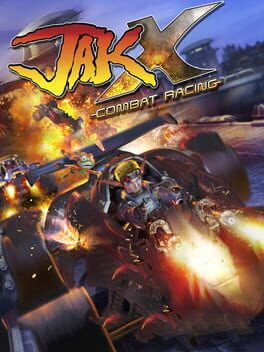
▲
1
▼
The series' in-universe Precursor language appears in several instances throughout the game, most notably in a series of Story cutscenes. During news broadcasts covering the racing tournament, a news ticker scrolling across the bottom of the screen produces a developer message from Naughty Dog when translated. The message says hello to the player and alludes to save data-based unlockable contents. However, an as-of-yet undiscovered secret is explicitly shared; the message does offer an input code, but to date, no use or purpose for it has been found.

subdirectory_arrow_right The Legend of Zelda (Franchise)
▲
3
▼
While Link being able to manually jump either on his own like in Zelda II: The Adventure of Link or through the use of an item like the Roc's Feather from The Legend of Zelda: Link's Awakening is a recurring ability in the series, several 3D installments forgo this in favor of having Link jump automatically at the edge of a platform. There are conflicting claims by series producer Eiji Aounuma and series co-creator Shigeru Miyamoto as to who thought of the automatic jump during the development of The Legend of Zelda: Ocarina of Time and why. Aonuma claimed the autojump was directly inspired by the Roc's Feather and he had it implemented due to his own poor ability at playing platform games, wishing that the game could do the jumping for him. Miyamoto on the other hand claimed that he had thought of the autojump one morning and sprung it on the development team, who were planning to add a manual jump and were previously used to making Mario games, as an intentional limitation to see if they could "do all kinds of things." Manual jumping would be incorporated into a 3D Zelda game for the first time with The Legend of Zelda: Breath of the Wild.
Video talking about the origin of the autojump:
https://www.youtube.com/watch?v=U8fBeUkaqmM
Iwata Asks interviews:
https://iwataasks.nintendo.com/interviews/3ds/zelda-ocarina-of-time/1/1/
https://iwataasks.nintendo.com/interviews/3ds/zelda-ocarina-of-time/4/4/
Eiji Aounuma interview:
https://www.theguardian.com/technology/2009/nov/25/eiji-aonuma-legend-zelda-interview
EDGE Issue #336 (Pages 32-35):
https://www.pressreader.com/australia/edge/20190815/page/32
https://nintendoeverything.com/eiji-aonuma-discusses-how-zelda-links-awakening-influenced-ocarina-of-time/
Games which feature auto jumping talked about on Zelda Wiki:
https://zelda.fandom.com/wiki/Autojump
Games which feature auto jumping talked about on Zelda Dungeon:
https://www.zeldadungeon.net/wiki/Auto-Jump
https://www.youtube.com/watch?v=U8fBeUkaqmM
Iwata Asks interviews:
https://iwataasks.nintendo.com/interviews/3ds/zelda-ocarina-of-time/1/1/
https://iwataasks.nintendo.com/interviews/3ds/zelda-ocarina-of-time/4/4/
Eiji Aounuma interview:
https://www.theguardian.com/technology/2009/nov/25/eiji-aonuma-legend-zelda-interview
EDGE Issue #336 (Pages 32-35):
https://www.pressreader.com/australia/edge/20190815/page/32
https://nintendoeverything.com/eiji-aonuma-discusses-how-zelda-links-awakening-influenced-ocarina-of-time/
Games which feature auto jumping talked about on Zelda Wiki:
https://zelda.fandom.com/wiki/Autojump
Games which feature auto jumping talked about on Zelda Dungeon:
https://www.zeldadungeon.net/wiki/Auto-Jump
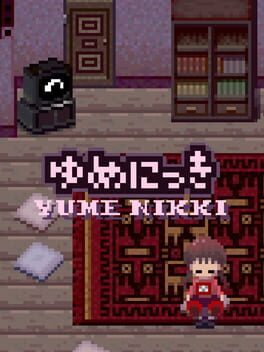
▲
2
▼
 Within the files for the Version 0.04 build are cached thumbnails depicting screenshots from a cut soccer minigame called Severed Head PK, which, per its name, would've used severed heads as balls. Despite their small size, the thumbnails are legible enough to understand what they depict: one shows a title screen, one shows a player select screen, and one shows actual gameplay. Additionally, all three images feature a much cruder art style than either the main game or NASU, the minigame ultimately added in Version 0.05. Of note is that like Severed Head PK, NASU takes place in a green field beneath a black sky and prominently features bright red assets (hills, text, and the title logo in Severed Head PK; the player character, clouds, and a strobe effect in NASU).
Within the files for the Version 0.04 build are cached thumbnails depicting screenshots from a cut soccer minigame called Severed Head PK, which, per its name, would've used severed heads as balls. Despite their small size, the thumbnails are legible enough to understand what they depict: one shows a title screen, one shows a player select screen, and one shows actual gameplay. Additionally, all three images feature a much cruder art style than either the main game or NASU, the minigame ultimately added in Version 0.05. Of note is that like Severed Head PK, NASU takes place in a green field beneath a black sky and prominently features bright red assets (hills, text, and the title logo in Severed Head PK; the player character, clouds, and a strobe effect in NASU).Given that NASU is preceded by a game selection menu with only two options present – "NASU" and "Quit Game" (the latter of which simply closes the menu) – it is unknown if Kikiyama intended to reincorporate Severed Head PK as an additional option.
The Cutting Room Floor articles:
https://tcrf.net/Proto:Yume_Nikki/Version_0.04/Unused_Graphics
https://tcrf.net/Proto:Yume_Nikki/Map_and_Event_Differences/Main_Maps#Madotsuki.27s_Room
https://tcrf.net/Notes:Yume_Nikki#YumeNikkiREADME.txt
YouTube video showing the menu that precedes NASU:
https://www.youtube.com/watch?v=fm2yEF1yIWw
https://tcrf.net/Proto:Yume_Nikki/Version_0.04/Unused_Graphics
https://tcrf.net/Proto:Yume_Nikki/Map_and_Event_Differences/Main_Maps#Madotsuki.27s_Room
https://tcrf.net/Notes:Yume_Nikki#YumeNikkiREADME.txt
YouTube video showing the menu that precedes NASU:
https://www.youtube.com/watch?v=fm2yEF1yIWw
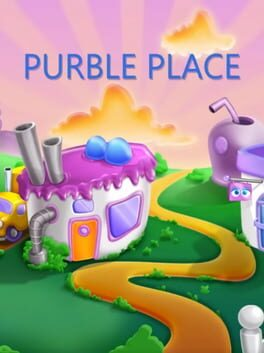
▲
1
▼
The developers of Purble Place do not recall where the name "Purble" came from, beyond it simply being alliterative and fun to say. During development, devs would frequently mistakenly refer to the game as "Purple Place".

subdirectory_arrow_right Star Fox Zero (Game)
▲
1
▼
 According to Takaya Imamura in a Q&A in 2024, James McCloud, Fox's father, seemingly returning from the dead to help Fox escape from the depths of Venom at the end of Star Fox 64's hard route was inspired by Obi-Wan Kenobi returning as a ghostly mentor for Luke Skywalker by the end of the 1977 film "Star Wars: Episode IV - A New Hope".
According to Takaya Imamura in a Q&A in 2024, James McCloud, Fox's father, seemingly returning from the dead to help Fox escape from the depths of Venom at the end of Star Fox 64's hard route was inspired by Obi-Wan Kenobi returning as a ghostly mentor for Luke Skywalker by the end of the 1977 film "Star Wars: Episode IV - A New Hope". According to Imamura, whether James is actually still alive, or some kind of ghost or vision that Fox saw, is ultimately up to the players to decide. Curiously, while Star Fox Zero (whose story is mostly just a straightforward retelling of Star Fox 64) also contains a sequence at the end where an apparition of James guides Fox through Venom, it appears that Andross can also see him, even shouting:
"Curse you, James McCloud. Why won't you stay dead?!"
Which further adds to the ambiguity on whether James is still alive or not.
Imamura Q&A on James' fate:
https://mond.how/ja/topics/6xv0oiuynu4rry8/tmtoco5v45tp4p1
Star Fox 64 hard route ending:
https://www.youtube.com/watch?v=XvuJwCA9xas
James and Fox fight off Andross in Star Fox Zero:
https://www.youtube.com/watch?v=CUTYjy9qB1Q?t=51
https://mond.how/ja/topics/6xv0oiuynu4rry8/tmtoco5v45tp4p1
Star Fox 64 hard route ending:
https://www.youtube.com/watch?v=XvuJwCA9xas
James and Fox fight off Andross in Star Fox Zero:
https://www.youtube.com/watch?v=CUTYjy9qB1Q?t=51

subdirectory_arrow_right Captain Rainbow (Game), Mach Rider (Game), Vs. Mach Rider (Game), Mach Rider (Collection)
▲
1
▼
 Both Mach Rider's identity and gender are ambiguous. They are portrayed with a muscular build, and the NES and Famicom versions' manuals never use any gendered pronouns to refer to them. The arcade port Vs. Mach Rider's stage clear screens slowly introduce piece-by-piece an image of a skimpily-dressed woman (bearing similarities to Jane Fonda's appearance in the 1968 film Barbarella) holding a dagger, but it is never specified if this character is Mach Rider, or one of the other wasteland survivors. However, Mach Rider's trophy description in Super Smash Bros. Melee years later lists them as a male character with he/him pronouns. Even later on, Captain Rainbow, a game centered around obscure and neglected Nintendo heroes, has an unused model for Mach Rider that, while not having visible breasts due to wearing armor, portrays them with a feminine skinny waist.
Both Mach Rider's identity and gender are ambiguous. They are portrayed with a muscular build, and the NES and Famicom versions' manuals never use any gendered pronouns to refer to them. The arcade port Vs. Mach Rider's stage clear screens slowly introduce piece-by-piece an image of a skimpily-dressed woman (bearing similarities to Jane Fonda's appearance in the 1968 film Barbarella) holding a dagger, but it is never specified if this character is Mach Rider, or one of the other wasteland survivors. However, Mach Rider's trophy description in Super Smash Bros. Melee years later lists them as a male character with he/him pronouns. Even later on, Captain Rainbow, a game centered around obscure and neglected Nintendo heroes, has an unused model for Mach Rider that, while not having visible breasts due to wearing armor, portrays them with a feminine skinny waist.

subdirectory_arrow_right Disney's Goof Troop (Game)
▲
2
▼
Some gameplay ideas used in Resident Evil - such as an action-puzzle-action-puzzle structure, and a restricted inventory system - were first explored in the very tonally opposite SNES cartoon adaptation Disney's Goof Troop, which was designed by Resident Evil's director Shinji Mikami. One rumor, originally claimed online in a Kotaku article by Tim Rogers, who claimed to have been informed of the connection by an unspecified "tech genius" friend, suggests that Resident Evil is built off of Goof Troop's source code.
Article about similarities:
https://www.cbr.com/goof-troop-game-by-resident-evil-creator/
Tim Rogers on Goof Troop and Resident Evil:
https://kotaku.com/i-love-final-fantasy-vii-now-watch-me-pretend-i-hate-i-5939487
https://www.cbr.com/goof-troop-game-by-resident-evil-creator/
Tim Rogers on Goof Troop and Resident Evil:
https://kotaku.com/i-love-final-fantasy-vii-now-watch-me-pretend-i-hate-i-5939487
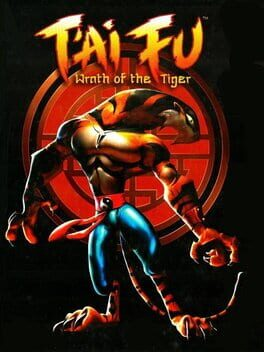
subdirectory_arrow_right Kung Fu Panda (Franchise)
▲
1
▼
 According to T'ai Fu: Wrath of the Tiger game design lead Noah Hughes and assistant character designer Dan Panosian's official biographies on certain websites, the Kung Fu Panda movies were inspired by concept art for the game, which was developed at the interactive subsidiary of DreamWorks. However, these claims are somewhat dubious, as nobody who worked on the Kung Fu Panda movies has come forward claiming any inspiration from the game, and none of T'ai Fu's character designers are credited anywhere in the movie's credits.
According to T'ai Fu: Wrath of the Tiger game design lead Noah Hughes and assistant character designer Dan Panosian's official biographies on certain websites, the Kung Fu Panda movies were inspired by concept art for the game, which was developed at the interactive subsidiary of DreamWorks. However, these claims are somewhat dubious, as nobody who worked on the Kung Fu Panda movies has come forward claiming any inspiration from the game, and none of T'ai Fu's character designers are credited anywhere in the movie's credits.
Hughes talks T'ai Fu:
https://www.unseen64.net/2019/02/20/tai-fu-wrath-tiger-beta-playstation
Dan Panosian biography, referencing T'ai Fu (but not by name):
https://www.humanoids.com/y_user/author/id/6303
T'ai Fu credits:
https://www.mobygames.com/game/32128/tai-fu-wrath-of-the-tiger/credits/playstation/
https://www.youtube.com/watch?v=XE0tWtQWcac
Kung Fu Panda credits:
https://www.metacritic.com/movie/kung-fu-panda/credits/
https://www.youtube.com/watch?v=XTn_6tljNBM
https://www.unseen64.net/2019/02/20/tai-fu-wrath-tiger-beta-playstation
Dan Panosian biography, referencing T'ai Fu (but not by name):
https://www.humanoids.com/y_user/author/id/6303
T'ai Fu credits:
https://www.mobygames.com/game/32128/tai-fu-wrath-of-the-tiger/credits/playstation/
https://www.youtube.com/watch?v=XE0tWtQWcac
Kung Fu Panda credits:
https://www.metacritic.com/movie/kung-fu-panda/credits/
https://www.youtube.com/watch?v=XTn_6tljNBM

subdirectory_arrow_right Super Smash Bros. for Wii U (Game)
▲
1
▼
 Donkey Kong's sprite on 75M in Super Smash Bros. Brawl and Super Smash Bros. for Wii U has a tan skin tone, which is different from DK's paler sprite in either the NES or arcade versions of Donkey Kong. This appears to be the result of Nintendo using an image of the game's arcade version originating from a Japanese retro gaming fan site called Muu-World as reference material, as that image seems to have a color error that makes DK appear tan. The English-language fan wiki Super Mario Wiki has been hosting a different Donkey Kong screenshot with the same error on its page for the game since 2005, and the source of the error as well as several of the images featuring it (including the Mario Wiki screenshot) is currently unknown. It also gives DK a coincidental resemblance to the appearance on the box art for NES Donkey Kong and in-game in Atarisoft's Commodore 64 Donkey Kong. This was fixed for Super Smash Bros. Ultimate.
Donkey Kong's sprite on 75M in Super Smash Bros. Brawl and Super Smash Bros. for Wii U has a tan skin tone, which is different from DK's paler sprite in either the NES or arcade versions of Donkey Kong. This appears to be the result of Nintendo using an image of the game's arcade version originating from a Japanese retro gaming fan site called Muu-World as reference material, as that image seems to have a color error that makes DK appear tan. The English-language fan wiki Super Mario Wiki has been hosting a different Donkey Kong screenshot with the same error on its page for the game since 2005, and the source of the error as well as several of the images featuring it (including the Mario Wiki screenshot) is currently unknown. It also gives DK a coincidental resemblance to the appearance on the box art for NES Donkey Kong and in-game in Atarisoft's Commodore 64 Donkey Kong. This was fixed for Super Smash Bros. Ultimate.
In-depth 75M analysis article:
https://thatnintendonerd.github.io/Ultimate-Stage-Research/blog/75m
Assumed image origin:
https://web.archive.org/web/20050824043108/http://www010.upp.so-net.ne.jp/muu-word/acdkong.html
https://thatnintendonerd.github.io/Ultimate-Stage-Research/blog/75m
Assumed image origin:
https://web.archive.org/web/20050824043108/http://www010.upp.so-net.ne.jp/muu-word/acdkong.html
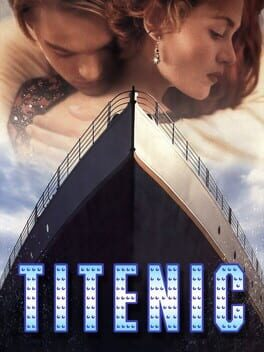
▲
1
▼
Titenic was finished an indeterminately long time before its release in 2003 (presumably back when the 1997 film "Titanic" was recent), but was temporarily shelved due to declining interest in the Taiwanese Famicom market. Although not stated by any official sources, it could also be incurred that it may have had difficulty releasing due to the film's target audience being very distant from those that video games were marketed to in the 1990s, as it was released with the more pre-teen-boy-targeting reskin, Harry's Legend in 2001, prior to the release of the original Titenic.
Hummer Team email interview:
http://bootleg.games/BGC_Forum/index.php?topic=679.0
Harry's Legend gameplay:
https://www.youtube.com/watch?v=vyl0_cQ1zjY
http://bootleg.games/BGC_Forum/index.php?topic=679.0
Harry's Legend gameplay:
https://www.youtube.com/watch?v=vyl0_cQ1zjY

subdirectory_arrow_right Angry Birds (Franchise)
▲
1
▼
 In a 2023 leak of unreleased content from different iOS games, an app titled Angry Birds Island - or alternatively Angry Birds Hatchery - was discovered. The prototype was simply a version of the original Angry Birds with two major differences
In a 2023 leak of unreleased content from different iOS games, an app titled Angry Birds Island - or alternatively Angry Birds Hatchery - was discovered. The prototype was simply a version of the original Angry Birds with two major differences•A mode called "Hatchery", which shows an overworld map of an island with a row at the bottom of toys and furniture
•The first two worlds of the original game, but with an option to select from a set of birds, all of which appear to be hybrids of the regular birds
This seemingly implies some kind of pet simulator mode with an egg breeding mechanic, not unlike the Chao Gardens from the Sonic Adventure series. It is unknown if this was planned as an update for Angry Birds or a new spin-off.
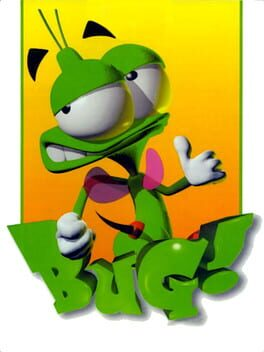
▲
1
▼
A well-known claim relating to Bug! is that legendary film director Steven Spielberg endorsed the game as "the character that is going to do it for [the Sega] Saturn." This claim is somewhat dubious however, as both the 2009 IGN article the quote was popularized by and the internal pitch video for the game's sequel that the quote originated from cite the origin as being from his visit to the 1995 Consumer Electronics Show, which was in January, 5 months before Bug! would be revealed to the public at E3. Bug! creator David Warhol has stated that he was not there to actually see Spielberg approve of the game, but did know that he approved of the game.
Twitter thread researching quote history:
https://twitter.com/PandaMoniumGR/status/1637489008950362117
IGN article the quote originated from:
https://www.ign.com/articles/2009/02/02/what-hath-sonic-wrought-vol-10
GameFan magazine Volume #3, Issue #7 (Page 52):
https://retrocdn.net/images/d/db/GameFan_US_0307.pdf
https://twitter.com/PandaMoniumGR/status/1637489008950362117
IGN article the quote originated from:
https://www.ign.com/articles/2009/02/02/what-hath-sonic-wrought-vol-10
GameFan magazine Volume #3, Issue #7 (Page 52):
https://retrocdn.net/images/d/db/GameFan_US_0307.pdf

subdirectory_arrow_right Kingdom Hearts (Franchise)
▲
1
▼
In each Dive to the Heart segment in almost every game in the series, there is a disembodied voice that can only speak through text that guides the characters (and thus the player as well) through the tutorial of each game. The identity of these voices has been unidentified in every game but Kingdom Hearts: Birth by Sleep (where it is obviously child Sora) and the first Kingdom Hearts. For the latter, in the Kingdom Hearts Ultimania, Nomura was asked who the voice is for the opening of the first game and he finally gave it's identity as being none other than King Mickey. However, this interview was done in the early 2000's before most of the sequels were produced, so it's unknown if this explanation was retconned or not.

▲
1
▼
After defeating Solidus Snake at the end of the game, he falls to his death off of the Federal Hall building. Just before he falls however, if you look closely, you can see his lips move slightly in the brief moments that they are not covered by the collar of his exoskeleton. By replacing Solidus' model with Solid Snake's (who shares most of Solidus' facial features) through mods, it reveals that Solidus was actually saying one last message to Raiden. However, the dialogue during this moment is still muted, so Solidus' last words remain unknown.
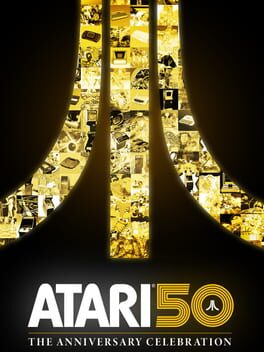
subdirectory_arrow_right Swordquest: Waterworld (Game), Swordquest: Fireworld (Game), SwordQuest: AirWorld (Game), Swordquest: Earthworld (Game), Swordquest (Collection)
▲
1
▼
 The SwordQuest series was a series of 4 games developed by Atari, each one having an associated contest to win a one-of-a-kind item from the game made of real gold by finding clues in the game and using them to uncover hidden messages in the attached comic book, then coming to Atari headquarters to compete in a contest version of the respective game. The advertised prizes were:
The SwordQuest series was a series of 4 games developed by Atari, each one having an associated contest to win a one-of-a-kind item from the game made of real gold by finding clues in the game and using them to uncover hidden messages in the attached comic book, then coming to Atari headquarters to compete in a contest version of the respective game. The advertised prizes were:•Talisman of Penultimate Truth, Earthworld's prize
•Chalice of Light, Fireworld's prize
•Crown of Life, Waterworld's prize
•The Philosopher's Stone, Airworld's prize
•The Sword of Ultimate Sorcery, the grand prize
Halfway through the series, the video game crash of 1983 hit, and it was put to a halt, leaving Airworld, the Philosopher's Stone, and the Sword of Ultimate Sorcery unreleased. The Chalice of Light is the only item known to still exist, with all others being believed to have been melted down at some point.
In Atari 50, a game based on Airworld would see release, though it was not based on the work done for the game back in the 1980s.
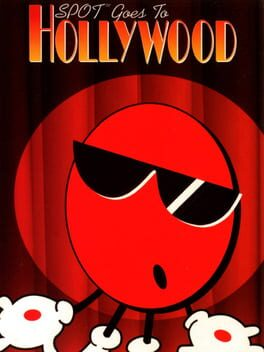
subdirectory_arrow_right 7 Up (Franchise)
▲
1
▼
The credits for Spot Goes to Hollywood call the game Cool Spot 3, but it is unknown what game is supposed to be Cool Spot 2. It could either be counting Spot: The Cool Adventure (which was released in Europe as McDonaldland, despite the credits for Hollywood not changing in that region) as Cool Spot 2, or it could be counting the original Cool Spot as Cool Spot 2 while treating the Reversi game Spot: The Video Game as Cool Spot 1.

▲
1
▼
 When Hades appears in the Polygon Man boss fight, there is a rare chance that he will perform a dance akin to a cowboy swinging a lasso while spinning in a circle. This dance originated from the 1995 episode "Viva Lost Wages" of the TV series "The Fresh Prince of Bel-Air", where Will and Carlton are forced to enter a talent contest to win money to return home from Las Vegas. During the talent contest, they performed a dance set to The Sugarhill Gang's cover of the Jerry Lordan-penned song "Apache" (also known as "Jump on It"), and the dance in question was originally improvised by actors Will Smith and Alfonso Ribeiro prior to the episode's filming backstage. The cowboy portion of this dance would later be popularized around the time of PlayStation All-Star Battle Royale's release through an appearance in the music video to "Gangnam Style" by Psy. It is not known if there is any way to intentionally trigger this Easter egg.
When Hades appears in the Polygon Man boss fight, there is a rare chance that he will perform a dance akin to a cowboy swinging a lasso while spinning in a circle. This dance originated from the 1995 episode "Viva Lost Wages" of the TV series "The Fresh Prince of Bel-Air", where Will and Carlton are forced to enter a talent contest to win money to return home from Las Vegas. During the talent contest, they performed a dance set to The Sugarhill Gang's cover of the Jerry Lordan-penned song "Apache" (also known as "Jump on It"), and the dance in question was originally improvised by actors Will Smith and Alfonso Ribeiro prior to the episode's filming backstage. The cowboy portion of this dance would later be popularized around the time of PlayStation All-Star Battle Royale's release through an appearance in the music video to "Gangnam Style" by Psy. It is not known if there is any way to intentionally trigger this Easter egg.
Hades dance Easter egg:
https://www.youtube.com/watch?v=rtYyyoBR9qo
Psy - Gangnam Style:
https://www.youtube.com/watch?v=9bZkp7q19f0
The Fresh Prince of Bel-Air - Viva Lost Wages dance:
https://www.youtube.com/watch?v=ga5nB0r9NMI
Will Smith and Alfonso Ribeiro performing the dance backstage:
https://www.youtube.com/watch?v=8_TkEgydyZY
BuzzFeed interview with Alfonso Ribeiro containing origin of "Apache (Jump On It)" dance:
https://www.buzzfeed.com/leonoraepstein/the-history-of-the-carlton-dance-as-told-by-the-legend-himse
https://www.youtube.com/watch?v=rtYyyoBR9qo
Psy - Gangnam Style:
https://www.youtube.com/watch?v=9bZkp7q19f0
The Fresh Prince of Bel-Air - Viva Lost Wages dance:
https://www.youtube.com/watch?v=ga5nB0r9NMI
Will Smith and Alfonso Ribeiro performing the dance backstage:
https://www.youtube.com/watch?v=8_TkEgydyZY
BuzzFeed interview with Alfonso Ribeiro containing origin of "Apache (Jump On It)" dance:
https://www.buzzfeed.com/leonoraepstein/the-history-of-the-carlton-dance-as-told-by-the-legend-himse
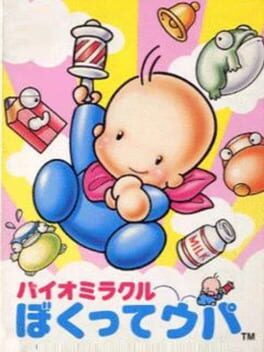
subdirectory_arrow_right Family Trainer: Rai-rai Kyonshis - Baby Kyonshi no Amida Daibouken (Game), The Mystery of Atlantis (Game), Yeah Yeah Beebiss II (Game), Yeah Yeah Beebiss I (Game), Baby Boomer (Game)
▲
1
▼
 In four separate 1989 issues of Video Games & Computer Entertainment, the mail-in game order service Play It Again put up an advertisement featuring a list of games customers could order. Among these is a mysterious title, Yeah Yeah Beebiss 1, which is not the name of any one game - this title would reappear in a separate advert for FuncoLand, under the name "Yeah Beebiss 1". To add further mystery to this game, it was placed between W and X games alphabetically instead of with Y games. There are multiple theories on the status of Beebiss:
In four separate 1989 issues of Video Games & Computer Entertainment, the mail-in game order service Play It Again put up an advertisement featuring a list of games customers could order. Among these is a mysterious title, Yeah Yeah Beebiss 1, which is not the name of any one game - this title would reappear in a separate advert for FuncoLand, under the name "Yeah Beebiss 1". To add further mystery to this game, it was placed between W and X games alphabetically instead of with Y games. There are multiple theories on the status of Beebiss:•Some believe that Beebiss is a baby-themed game like Baby Boomer, Rai Rai Kyonshis: Baby Kyonshi no Amida Daibouken, or Bio Miracle Bokutte Upa, given that "baby" sounds like "Beebiss" - with Rai Rai Kyonshis being considered the most likely candidate of the 3 for "Rai Rai"'s (A Japanese onomatopoeia associated with China) similarity to "Yeah Yeah", the game's release in 1989, and the presence of other import games on the listing. Rai Rai Kyonshis is generally the most accepted identity of the game.
•One theory proposes that the game was made as a copyright trap to catch which retailers are stealing game lists, something one of the founders of Play It Again confessed to doing, albeit without confirming if Beebiss was among those games.
•A rather strange theory proposes that the game was somehow related to exploring, possibly being Atlantis no Nazo's cancelled US release Super Pitfall II, named for Charles William Beebe, a famous explorer and naturalist
•Another theory suggests that the title was simply a bizarre, elaborate in-joke that both Play It Again and FuncoLand employees were in on.
The myth of Beebiss would inspire the game Yeah Yeah Beebiss II, developed by popular retro gaming YouTuber John Riggs and based on the aesthetic of Rai Rai Kyonshis.
| keyboard_double_arrow_leftFirst keyboard_arrow_leftPrev | Page 1 of 2 | Nextkeyboard_arrow_right Lastkeyboard_double_arrow_right |

